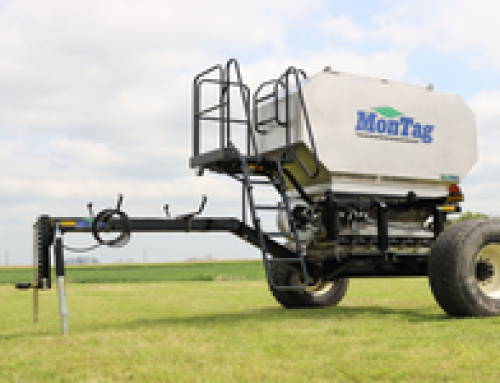by Elizabeth Burns-Thompson is executive director of the Modern Ag Alliance as it appeared in Agri-Pulse.
 |
|---|
| Elizabeth Burns-Thompson |
Des Moines, IA — Farming has never been easy. Growing up on a farm had its challenges, but like many others, my family took great pride in working the land and contributing to our community in eastern Iowa. That commitment hasn’t changed, but the way we farm has evolved. The technology used today looks very different than it did generations ago–and that’s not just a good thing, it’s a necessity.
Modern farming is a testament to human ingenuity, supported by sophisticated tools and driven by unprecedented scientific and technological innovation. In the 1940s, it’s estimated that a single farmer grew enough food to feed about 20 people.
Today, thanks to significant improvements in our biological, chemical, and mechanical know-how, that’s up to more than 160 people per farmer. These advancements have allowed farmers to nearly triple farm productivity while using less land and labor. Unfortunately, some of the most important of these innovations are under attack, creating uncertainty for farmers about their continued availability. It’s time to push back.
Crop protection tools, and glyphosate-based herbicides in particular, have faced misguided criticism that could have devastating consequences for farmers, consumers, and our environment. For more than 50 years, glyphosate has revolutionized modern farming by suppressing harmful weeds and increasing crop yields while reducing the need for tillage.
It’s the most widely used herbicide in the U.S. today across a variety of crops, including 98% of sugar beets, an average of 87% of corn, soybean, and cotton acres, and 58% of spring and durum wheat. Without it, research indicates that farmers’ input costs would increase by up to two and a half times per acre.
The Environmental Protection Agency and other regulatory bodies around the world have repeatedly concluded that, based on overwhelming scientific consensus, these products can be used safely and that glyphosate is not carcinogenic. So why is this essential tool under attack?
Critics have built their case on a single 2015 opinion by a fringe World Health Organization subagency–an outlier that has not been validated by a single leading global regulatory body and is contradicted by decades of scientific research. Despite conducting no original studies and failing to assess real-world risk, this opinion has been leveraged by the litigation industry to file tens of thousands of lawsuits against manufacturers of glyphosate-based herbicides.
Backed by undisclosed funding, they have spent hundreds of millions of dollars on advertising to recruit plaintiffs and reap a financial windfall. Activist state regulators like in California have also gotten into the game, attempting to mandate product labels that conflict with federal law and scientific consensus.
Some people have raised fair questions about the tools farmers use to grow food. That’s a good thing because it’s important that Americans understand the science behind modern agriculture and the rigorous regulations in place to ensure our safety. If glyphosate wasn’t safe, we wouldn’t use it on our farm, and neither would anyone else who grows our food and fuel. But disingenuous attacks by the litigation industry ignore science, distort facts, and mislead the public–raking in billions at the expense of farming’s future.
To read the entire article click here.



